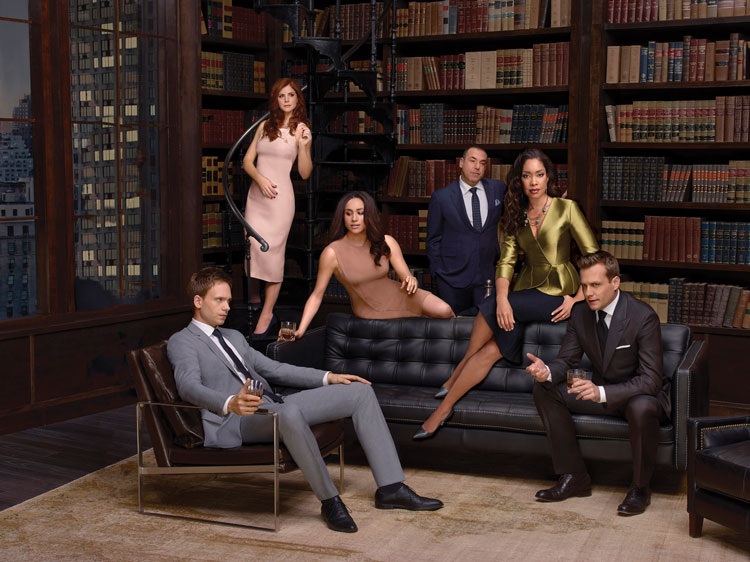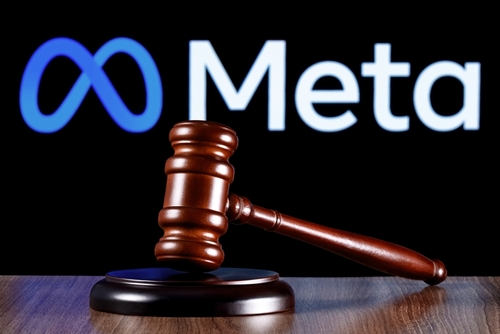Letters: Fashion faux pas

Was that really the best photo you could have chosen to introduce the otherwise progressive article “What Suits You?” February? The picture of three men standing or sitting professionally while surrounded by women seated atop and leaning suggestively over the back of the sofa made me cringe. Wearing dull or bright colors, in pantyhose or bare legs, women lawyers don’t sit like this.
Suzan Charlton
Washington, D.C.
I dress very conservatively for court in dark solid colors, pants in the winter and skirts in the summer. As a middle-aged woman of color, to deviate even a little from this is to risk being mistaken for the litigant, the court reporter, the social worker or any other actor in the dramatis personae of American courts. My suits are my uniform; my briefcase/bag my weapons. With them, I am ready to make my argument, take testimony, bargain in the hallways with opposing counsel, and infuse my client with confidence. If I stray away from the strictest of dress rules in court (comfier flats, brighter colors, sweater sets in family court, prints), I am automatically pegged as a nonlawyer and I first have to fight to establish who I am before I can get down to the business of lawyering. I stay conservative because if I do not, I cannot practice my profession effectively.
Rosemarie A. Barnett
Freeport, New York
I was deeply disappointed by this article about alleged evolution in lawyer fashion. Little, if any, of the article reflected actual changes in personal presentation beyond the elimination of hosiery and addition of spike heels. Instead, the same “traditional” tropes were described and embraced by male and female lawyers.
As a femme gay man who daily works with queer, transgender and gender nonconforming colleagues and clients, I felt the article completely failed to address the truly novel, forward-leaning and beautiful realm of queer professional and personal gender and style presentation. The challenges of finding “male” suiting to flatter “female” bodies, the struggle for a male-presenting lawyer to find a court-appropriate shade of nail polish or the profound sacrificing of personal identity (via fashion style) for the benefit of a client’s case or career advancement represent a true evolution in both fashion and the legal profession.
Failing to recognize these colleagues is exactly the subtle oppression that continues to keep minority communities feeling unwelcome and underrepresented in the legal profession.
Nicholas J. Hite
New Orleans
ON EXPANDING A RIGHT TO COUNSEL
Regarding “Justice for All,” February: I thought the source of Americans’ rights is the U.S. Constitution and its antecedent sources—including, of course, those of all men that, as Jefferson so eloquently stated, are “endowed by their creator.” Apparently, all one needs to do to manufacture new rights (out of thin air) is to simply “promote” them.
Whether providing greater legal representation in civil cases to the less fortunate serves a social good and, if so, how best to allocate scarce resources to accomplish that goal is certainly worthy of debate for a democratic society to undertake via the legislative process. Such benefits can and should be eligible for expansion and contraction. However, to attempt to manufacture some kind of “right” to taxpayer-funded civil legal representation only leads us to an ever-expanding government that will curtail all our liberty and property rights, including those that actually are enshrined in the Constitution.
Karl Burgunder
Oviedo, Florida
A NAMING ISSUE
Those who revile the attitudes and conduct of their 19th-century benefactors (“What’s in a Name,” February), such as Boalt and Hastings, often seem happy enough to complacently accept the benefits. At the very least, there should also be constant and conscious acknowledgment of our own irreparable debt to those who were deprived of their native lands and lives so that our modern American lifestyles can even have a place to be.
John A. Humbach
White Plains, New York



